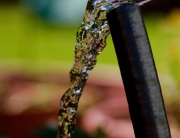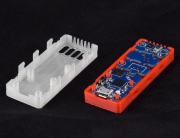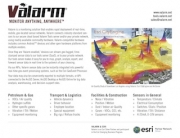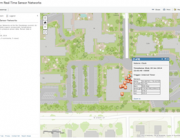IoT Revolutionizing Water Monitoring Systems for Businesses
 The Internet of Things, or the IoT, is revolutionizing nearly every industry around the planet.
The Internet of Things, or the IoT, is revolutionizing nearly every industry around the planet.
In 2017, the number of IoT devices in the world surpassed the number of people in the world for the first time.
By 2020, Gartner forecasts there will be 20.4 billion of these connected devices.
An IoT device is any device that has a unique identifier and can transfer data over a network without human interaction. These devices may communicate with each other or a central hub. These devices can be anything from smart appliances, to sensors affixed to pipelines, to biochips implanted in farm animals. Together, these devices form the internet of things.
One application for IoT technology is making water monitoring systems more efficient and cost-effective.
Water Monitoring Systems and IoT
 Watering monitoring systems are essential for ensuring water availability and verifying water quality. By monitoring their water supplies and systems, businesses can increase the efficiency of their water use and ensure that their water resources are being taken care of.
Watering monitoring systems are essential for ensuring water availability and verifying water quality. By monitoring their water supplies and systems, businesses can increase the efficiency of their water use and ensure that their water resources are being taken care of.
Businesses have used a variety of technologies to monitor their water systems. Before the internet of things, technicians had to physically go to locations where sensors were located to check the status of water systems. Now, with IoT sensors, technicians can check measurements remotely.
Internet-connected sensors can take measurements on a pre-determined schedule or when an event triggers them to take one. They can then send the data they collect over the internet to a central hub. This means that you can monitor systems remotely and in real time.
This improves efficiency because technicians no longer have to travel back and forth to take measurements. It enables companies to monitor their water continuously as well.
Capabilities of IoT Water Monitoring Systems
IoT water monitoring systems can take the same measurements that older technologies did, but they also offer some new functionalities.

Water well monitoring systems can take various kinds of water level measurements that businesses can use to ensure that their water is at a safe level above the water pump. Measurement types include depth to water, water level above the sensor and pump headroom.
IoT systems can also monitor pump rate in gallons per minute and total gallons. Comparing depth to water to pump rate can provide insights into aquifer recharge rates and the health of your groundwater.
The IoT can also help detect leakage in water systems. You can monitor for leaks using various technologies, including acoustic and temperature-based detection. Whichever technique you use, you can use an IoT device to send that data to a central hub. This allows you to detect and fix leaks quickly, reducing water waste.
Another important application of IoT water monitoring technology is flood monitoring. By placing water level sensors in areas with a high risk of flooding, you can monitor continuously for abnormally high water. These systems can provide early warning of potential flooding, allowing businesses, governments and residents alike to prepare. These types of warning systems can help companies to protect their assets and help prevent situations such as what occurred after Hurricane Florence when at least 1.4 million residents in North Carolina experienced a drinking water shortage due to flooding.
For agricultural businesses, IoT sensors can monitor soil moisture and weather conditions. Using this information, farmers can determine the ideal times to water crops and even the precise amount of water needed. This enables them to use their water and time more efficiently.
The Future of Water Monitoring Systems
As IoT technology becomes more advanced, so will water monitoring systems. Using smart technologies for monitoring water usage and quality will also become more common. In the coming years, we’ll likely see new capabilities as well as increased efficiency and cost reduction in water monitoring.
Note: Big thanks goes out to Emily for writing this guest blog post. Emily covers topics is green innovation and manufacturing. She is also the creator of Conservation Folks.

























































































































































































































































































































